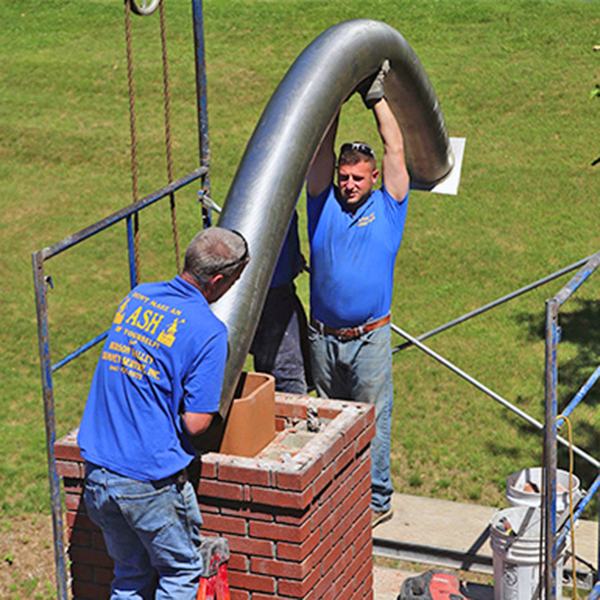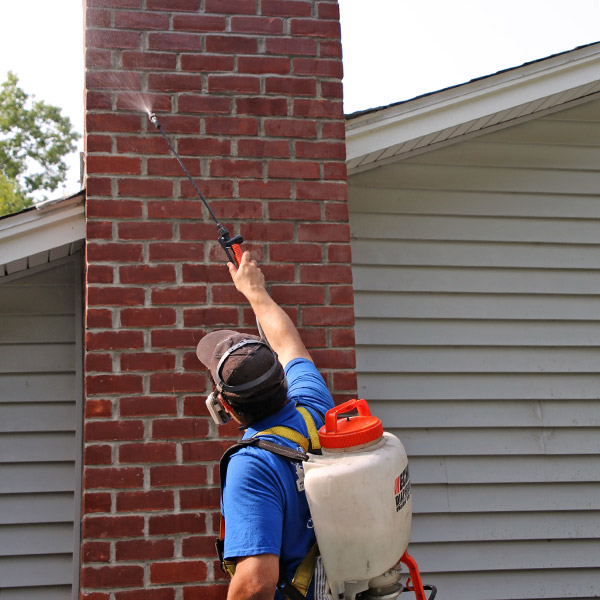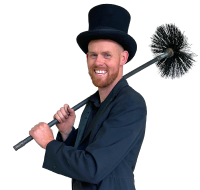Why Chimney Relining is Worth It
Chimney liners protect your home from fire, and in most areas, they’re required if you want your chimney to pass inspection when you sell your home. In this post, we look at what a chimney liner is, how to know when to replace it, and how to increase its lifespan.
 What is a Chimney Liner?
What is a Chimney Liner?
Smoke and combustion byproducts from your fireplace go up the flue and out of the house. Back in the day, there wasn’t any protection between the chimney and the home’s combustible materials, resulting in many chimney fires. That’s why flue liners became mandatory.
To prevent accidental fire, the chimney, or flue liner, creates a barrier between your chimney and your home. Chimney liners limit the heat that can transfer between the chimney and your home’s woodwork and other materials that could ignite when temperatures get too high.
Another advantage of a chimney liner is that it protects the masonry materials from the fire’s corrosive byproducts. Over time, corrosion can eat away the mortar joints, weakening your chimney’s structure and opening yourself up to a possible fire.
How to Know When to Replace Your Chimney Liner
Because your chimney liner is exposed to extreme heat and corrosive combustion byproducts, it will eventually wear out. What it’s made from can determine how long you have before replacement is necessary. We’ll get into the various materials chimney liners are made from in a bit, but for now, here are the most common signs you need to consider a replacement.
Broken Pieces in the Firebox
Most chimney liners are made from clay, which wears out more quickly than metal liners. If you see broken shards or pieces of clay in the firebox, it’s a sure sign your liner is deteriorating and needs to be replaced.
Too Much Smoke
Even if you don’t see broken clay pieces, your liner could still be damaged. As mentioned, the liner helps remove smoke from the fire to the outside, so if your living room is unusually smoky, it could mean your liner needs replacing. However, smoke isn’t the only issue; even if there isn’t excessive smoke, a broken chimney liner could expose you to carbon monoxide poisoning.
Age
Nothing can stop the march of time, and how old your chimney liner is could signal you need to replace it, regardless if it’s not giving you problems. As we said earlier, what your liner is made from determines how long it lasts.
Clay liners are the most popular because they’re inexpensive but have the shortest lifespan. Expect a clay liner to last about 12 years. Metal chimney liners, whether stainless steel or aluminum, fare better and can last up to 25 years. The cast-in-place liner is the most expensive, typically made from cement, but lasts the longest. A well-maintained cast-in-place liner can last over 50 years, making it a worthy investment for many.
How to Increase Your Chimney Liner’s Lifespan
Chimneys are less robust than people think. Weather, use, and extreme temperatures take their toll and cause them to break down if they’re not maintained. Here are the things you must do to ensure your chimney lasts as long as possible and is safe.
While many heating alternatives are on the market, nothing beats a roaring fire. However, chimneys are less robust than you might think, and there are things you must do to ensure they operate efficiently and safely.
Schedule Annual Maintenance
The most important thing you can do to keep your fireplace and chimney safe and extend your flue liner’s lifespan is to hire a professional sweep to clean it once a year. Even if you don’t use your fireplace often, annual cleaning removes obstructions like bird nests and other debris from the flue that could cause a blockage and put your family at risk.
Burn Seasoned Firewood
The wood you burn determines how enjoyable, efficient, and safe your fireplace is. Experts recommend burning only seasoned firewood or wood that’s been thoroughly dried. Recently cut wood contains too much moisture, which produces excess smoke and corrosive byproducts, leading to creosote buildup and liner deterioration.
Waterproof Your Chimney
Water damage is the number-one enemy of masonry materials, including your chimney. Water can seep in, eroding mortar joints, brickwork, and clay liners.

If you live in a climate that sees heavy storms, ice, and snow, waterproofing your chimney is a cost-effective investment that offers long-term protection against water damage and can extend the lifespan of your chimney.
Call Hudson Valley Chimney
If your chimney liner has seen better days, call the local professionals at Hudson Valley Chimney Sweep. We’re the top-rated chimney and fireplace service company in the Hudson Valley and have proudly served the area since 1976.
Whether you need a chimney liner replacement, repairs, inspection, cleaning, waterproofing, or anything in between, you can count on our friendly, professional staff. Book your appointment today at 845–471–1071.





